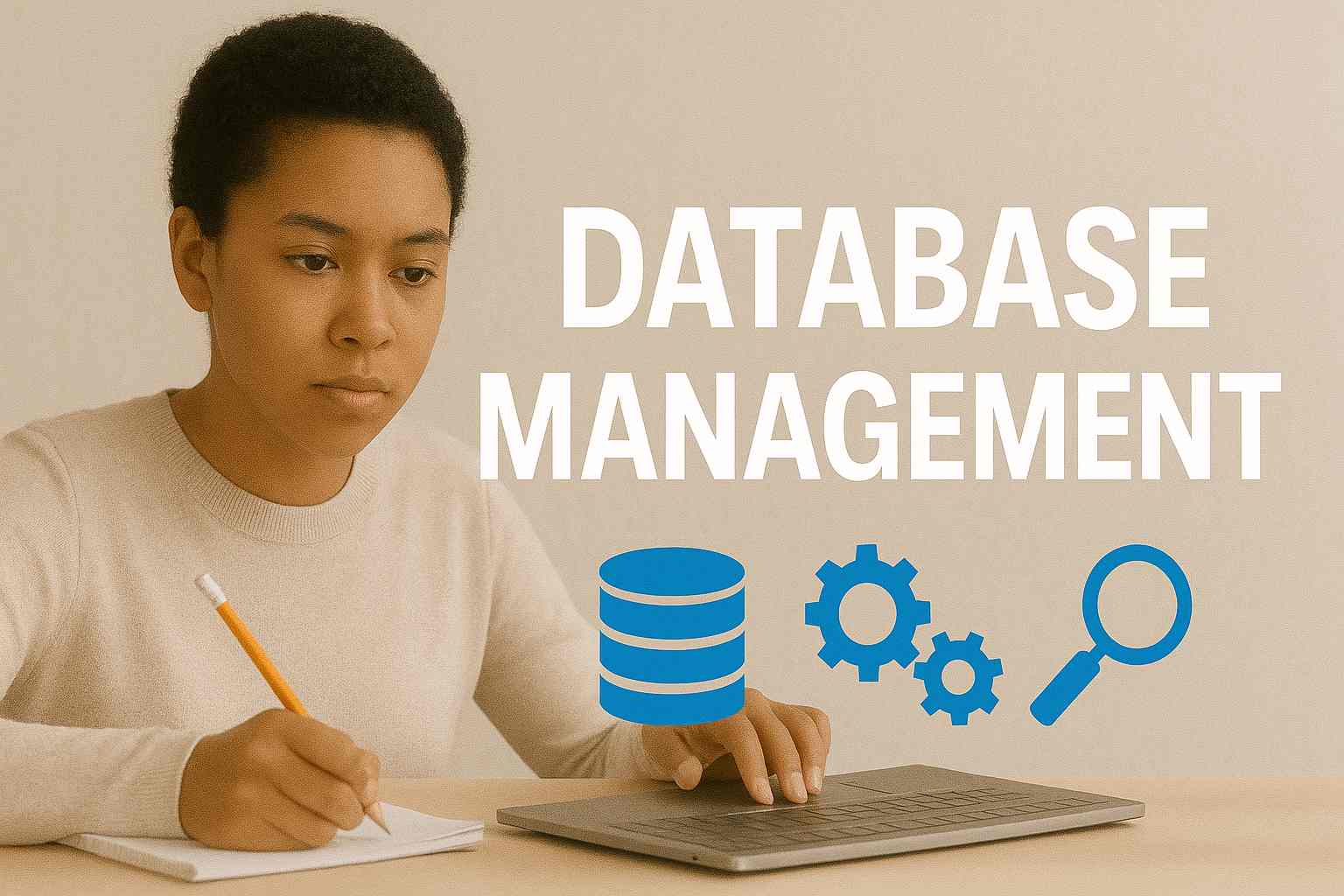
💡 What is a Database?
A database is an organized collection of data that can be easily accessed, managed, and updated.
✅ Used to store information digitally
✅ Helps users and systems retrieve data efficiently
✅ Can hold anything from student records to bank transactions, inventory, or social media posts
💻What is a DBMS?
A Database Management System (DBMS) is the software that allows users to create, read, update, and delete data from databases.
✅ Controls how data is stored and accessed
✅ Maintains data integrity and security
✅ Supports multi-user access
✅ Enables backup, recovery, and reporting
Examples of DBMS:
MySQL (open source, widely used)
PostgreSQL (powerful, open source)
Microsoft SQL Server (common in enterprises)
Oracle DB (used in large companies and governments)
SQLite (used in mobile apps and local apps)
🧱 1. Structure of a Relational Database
Relational databases store data in tables — similar to spreadsheets.
Each table has:
Rows (records): Individual entries
Columns (fields): Data categories like name, age, or price
Primary key: A unique ID for each row
Foreign key: A reference to another table’s primary key
For example:
Students Table
Departments Table
This structure helps organize large volumes of data while avoiding duplication.
🔄 2. CRUD Operations – What We Do with Data
CRUD stands for the four basic functions of working with data:
Create – Add new records (e.g., a new student)
Read – View existing data (e.g., show all students in IT)
Update – Change data (e.g., update a student’s age)
Delete – Remove data (e.g., delete a student who graduated)
These operations are done using SQL (Structured Query Language) — a special language for databases.
📊 3. Real-World Examples of Databases
✅ A university stores students, courses, grades, and schedules
✅ A hospital stores patient records, medications, and appointments
✅ A bank stores customer accounts and transactions
✅ An e-commerce store stores products, orders, and delivery info
✅ Government agencies use databases for IDs, taxes, or statistics
Even Ardiland can use a database to manage users, courses, and progress tracking.
🔐 4. Data Integrity and Constraints
A good DBMS makes sure your data is:
✅ Accurate: No wrong entries (e.g., age = "banana")
✅ Unique: No duplicate IDs
✅ Consistent: All student records have departments that exist
✅ Secure: Only authorized people can access or change data
Constraints include:
NOT NULL: Field must have a value
UNIQUE: No duplicates allowed
FOREIGN KEY: Data must match values in another table
CHECK: Control acceptable values (e.g., age > 0)
🔄 5. Relationships Between Tables
Tables in a relational database are linked using keys, forming:
One-to-One: One student = one ID card
One-to-Many: One department = many students
Many-to-Many: Students enrolled in many courses
These relationships avoid data repetition and improve query power.
📥 6. Data Querying with SQL (Concept Overview)
SQL (Structured Query Language) is used to communicate with the database.
You can:
✅ Search for students in IT
✅ Sort courses by level
✅ Group sales by region
✅ Join tables to build complete reports
Even non-developers (data analysts, admins) use SQL to extract insights and prepare reports.
🧰 7. Additional DBMS Features
Modern DBMSs offer:
✅ User Roles and Permissions – Control who can access or edit data
✅ Backup & Restore – Avoid data loss during crashes
✅ ACID Properties – Guarantee accuracy and consistency even if power is lost
✅ Views and Indexes – Optimize data access and security
✅ Triggers – Automatic actions when certain data changes
💡 8. Database Design Principles
✅ Normalize your data – Break into multiple related tables
✅ Use meaningful keys – IDs should be consistent
✅ Plan relationships – Decide which data needs linking
✅ Avoid data duplication – Let relationships manage this
✅ Think of future updates – Make your design flexible
Good design makes your database efficient, secure, and easy to expand.
💼 Where DBMS Knowledge is Needed
IT Support (Troubleshoot DB issues)
Full Stack Developer (Use DB in apps)
System Administrator (Backups & access control)
Data Analyst (Query and analyze data)
ERP / MIS Officer (Handle business systems)
University Registrar or Finance Officer (Admin software)
Comments (0)
Categories
Recent posts


Ethiopian Coders Initiative: Free Coding ...
18 Mar 2025
Grade 12 Exam Preparation Ethiopia | ...
18 Mar 2025
How to Make Money Online in Ethiopia | ...
18 Mar 2025




